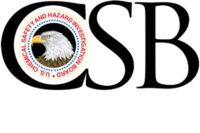Tiny particles, massive threat: The unseen danger of combustible dust

Photo: Getty Images Plus
The potential for a dust explosion lurks in an alarming number of workplaces, yet many companies remain unprepared for this silent threat. That's according to safety expert Mark Hanson, senior EHS manager at N Three B, who recently presented a sobering look at the dangers of combustible dust in an ISHN webinar sponsored by Camfil, Nilfisk, and Vacuumax.
“It’s a low probability, but a high consequence,” Hanson explained, highlighting the insidious nature of combustible dust hazards. While many businesses may believe “it’ll never happen here," the consequences when it does can be catastrophic.
Hanson pointed to a series of high-profile incidents, including a 2003 incident in Massachusetts where three people were killed and nine injured in a combustible dust explosion. He also referenced the Imperial Sugar Company explosion in 2008, which tragically claimed the lives of 13 workers and resulted in numerous serious injuries.
“How bad can sugar be?” thought Hanson, driving home the point that seemingly benign materials can quickly transform into deadly hazards when in dust form. He emphasized that the finer the dust particle, the greater the risk, as smaller particles ignite more easily and create more powerful explosions.
Citing data from the Chemical Safety and Hazard Investigation Board (CSB), Hanson revealed that over 28 years, approximately 3,500 combustible dust explosions occurred in the U.S., resulting in 119 deaths and 718 injuries. These figures underscore the urgent need for increased awareness and proactive safety measures.
Hanson stressed the importance of conducting thorough dust hazard analyses (DHAs), urging companies to identify all potential sources of combustible dust and determine their explosive properties. He emphasized the need for regular housekeeping, noting that even a 1/32-inch layer of dust accumulation can pose a significant risk.
"Housekeeping is key," Hanson stated emphatically. "I've seen places that are clean that are not necessarily safe, but I don't think I've ever seen a place that's messy, [with] bad housekeeping, that is safe."
Beyond housekeeping, Hanson recommended a range of engineering controls, including:
- Centralized vacuum systems for efficient and safe dust removal.
- Explosion venting for directing explosive force away from occupied areas.
- Chemical explosion suppression systems for rapidly extinguishing explosions.
- Properly designed dust collection systems for preventing dust accumulation and potential ignition sources.
Hanson also emphasized the importance of comprehensive employee training programs that focus on hazard recognition, safe work practices, and emergency procedures. He urged companies to foster a culture of safety where employees feel empowered to report potential hazards and contribute to a safer work environment.
The webinar concluded with a powerful message: Addressing combustible dust hazards is not just about compliance; it's about protecting lives and livelihoods. By implementing proactive safety measures and fostering a culture of safety, businesses can mitigate the risks associated with this often-overlooked workplace danger.
Looking for a reprint of this article?
From high-res PDFs to custom plaques, order your copy today!







